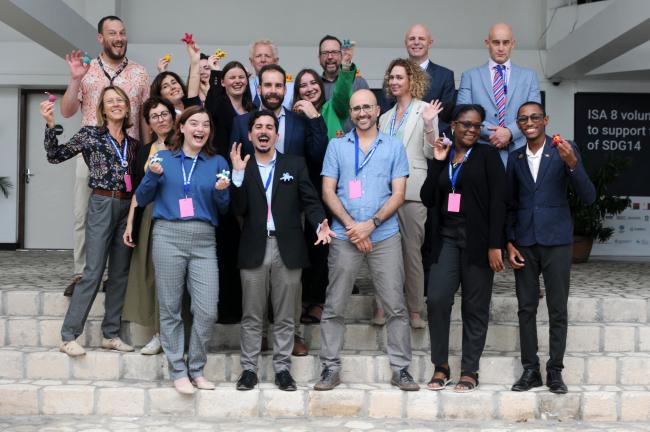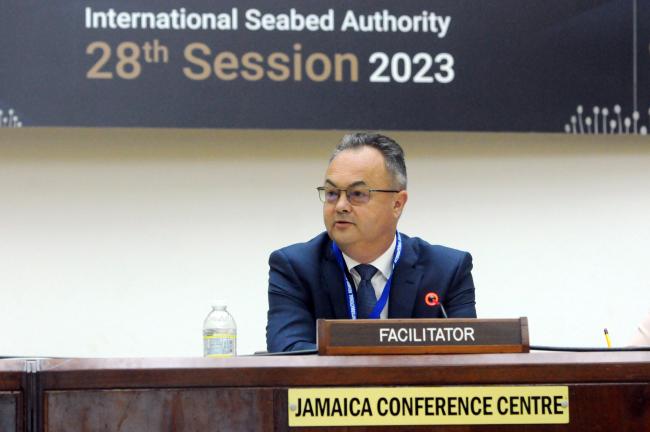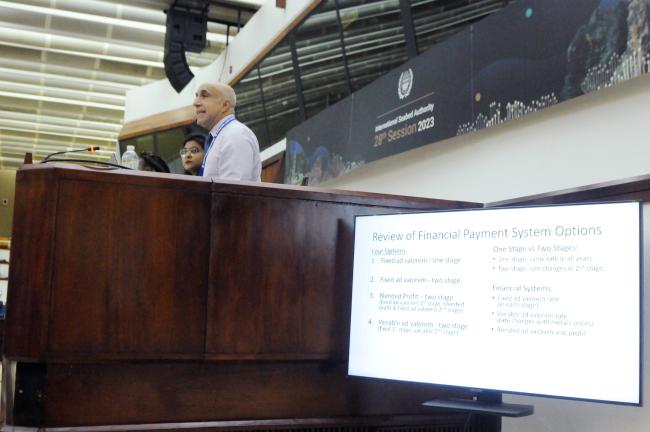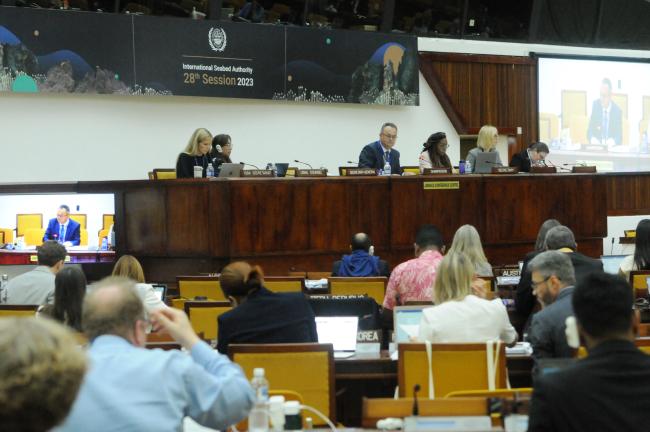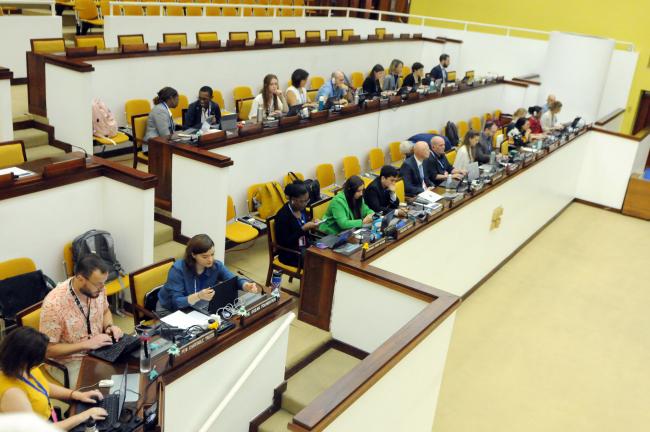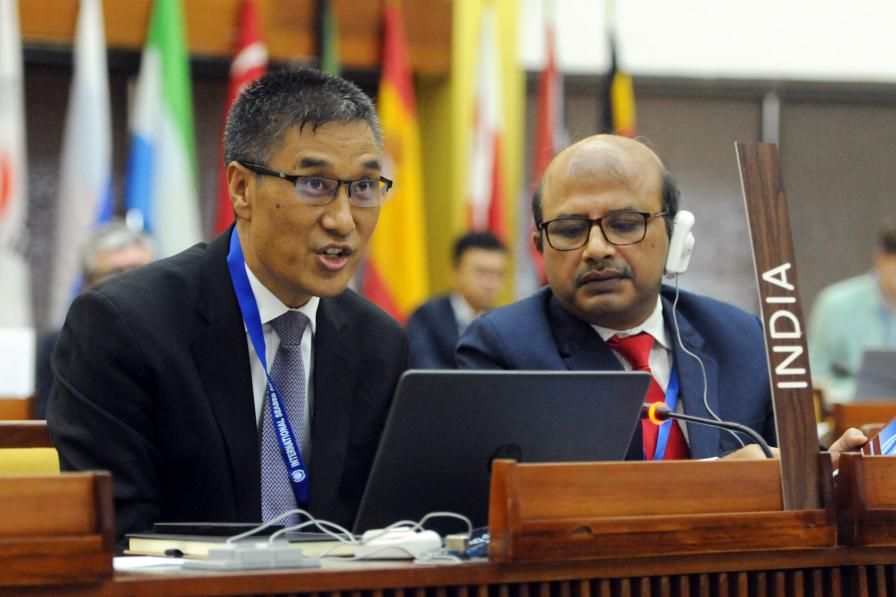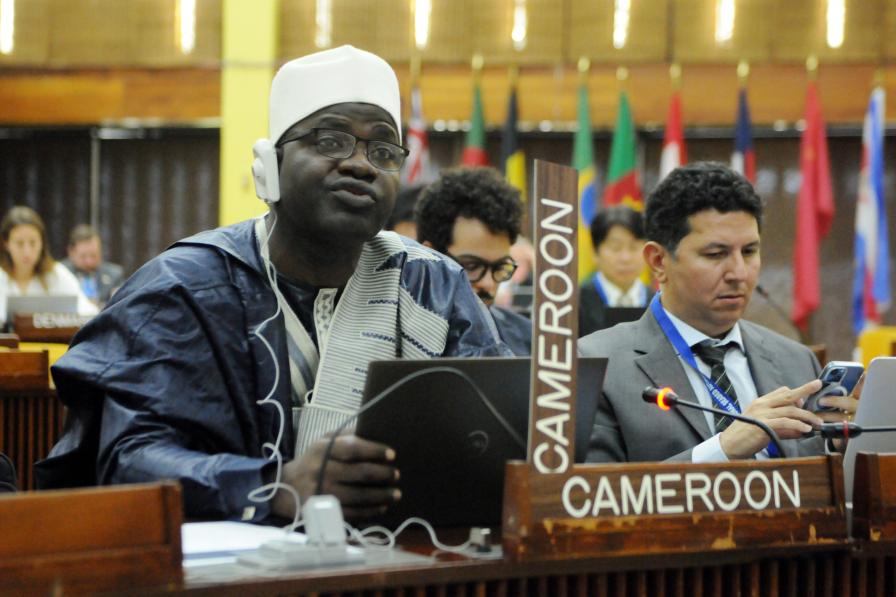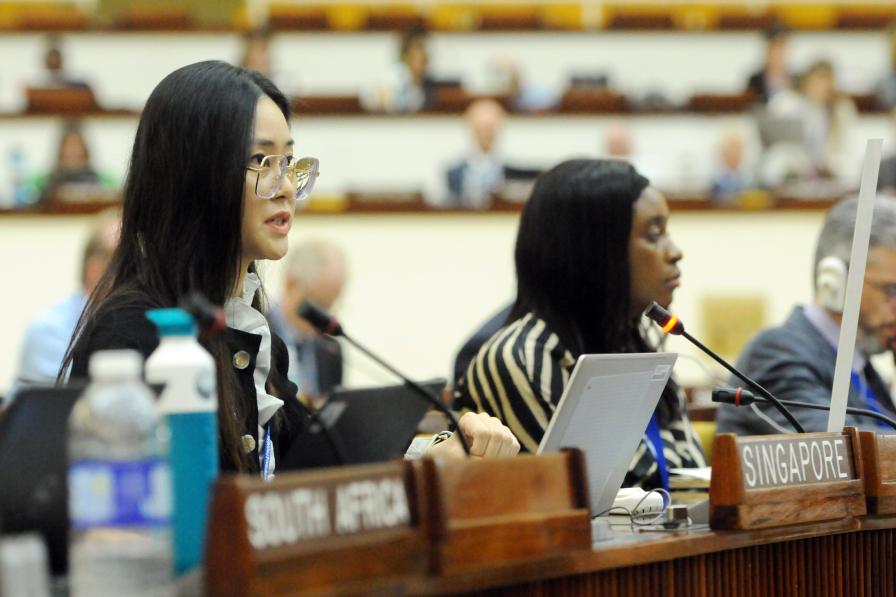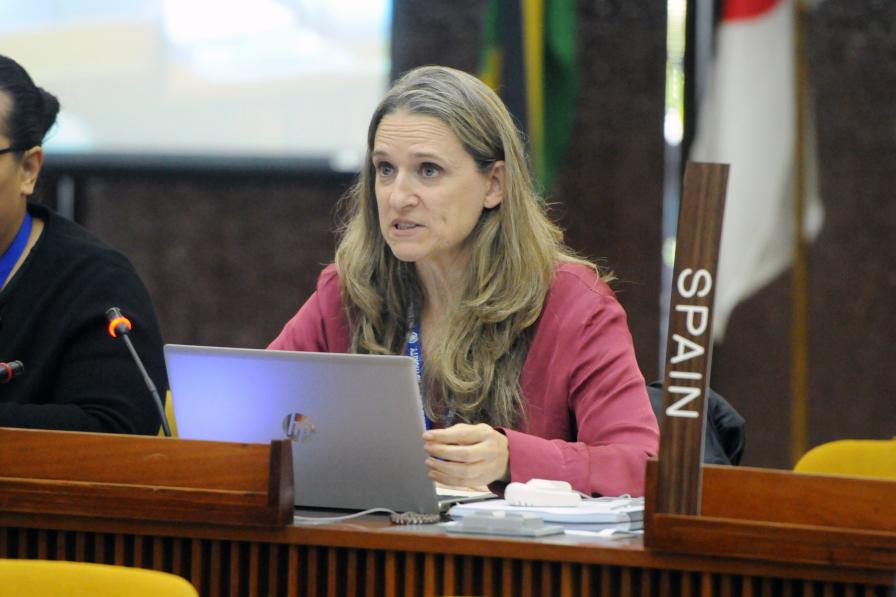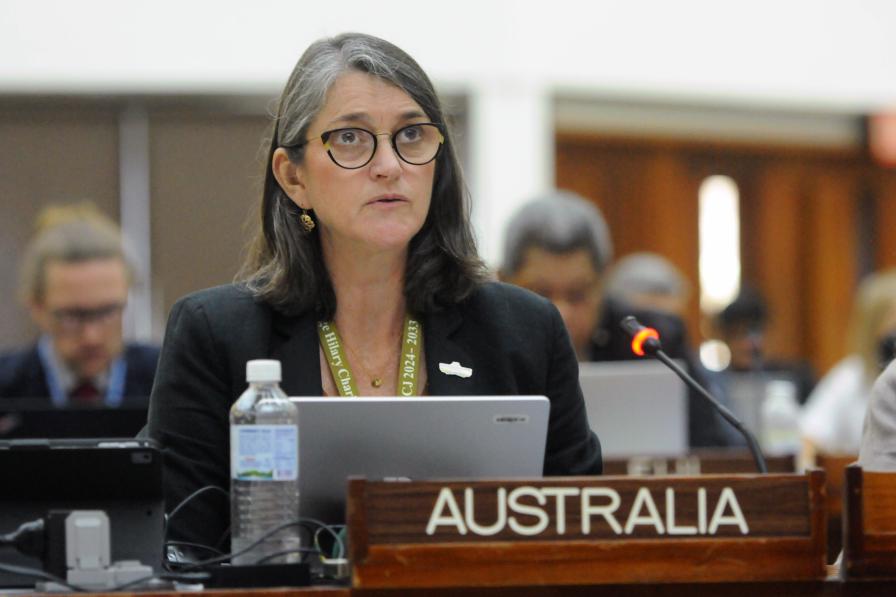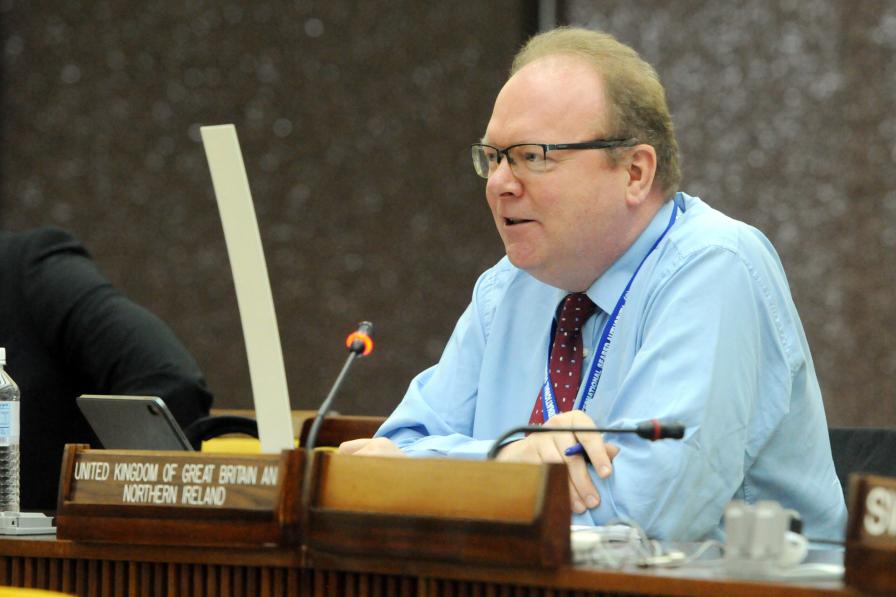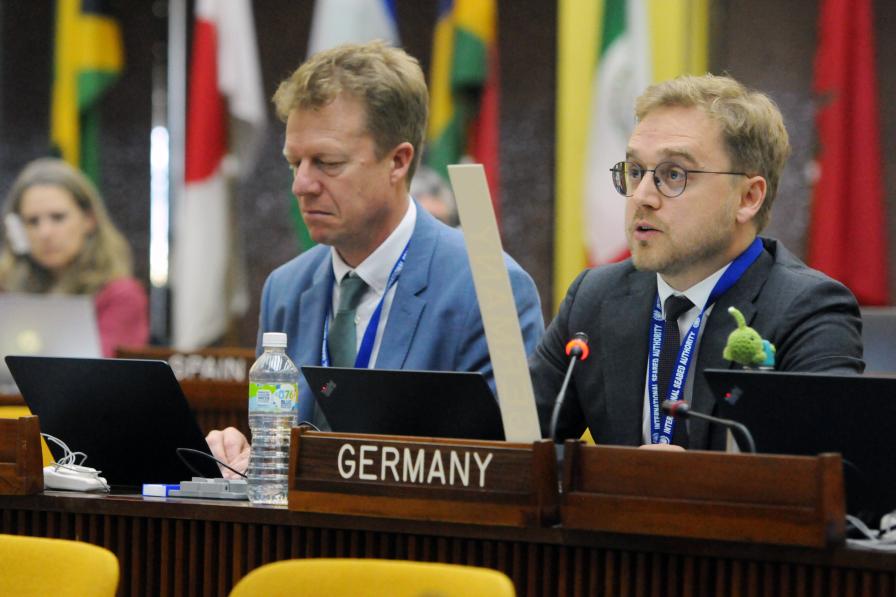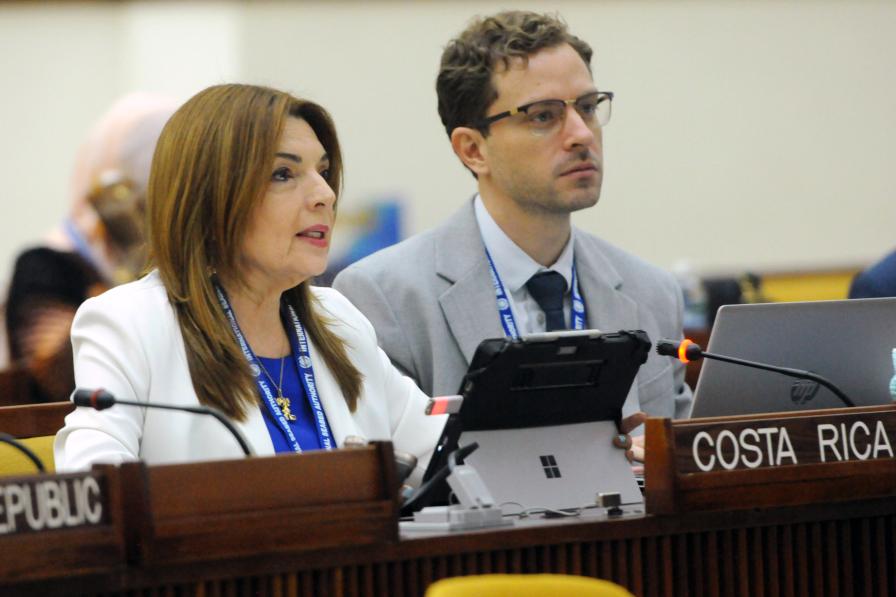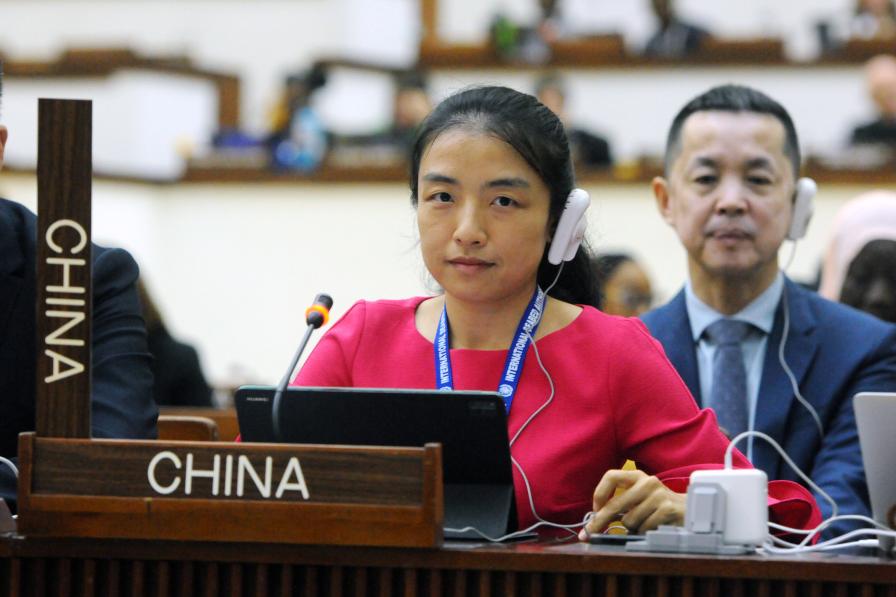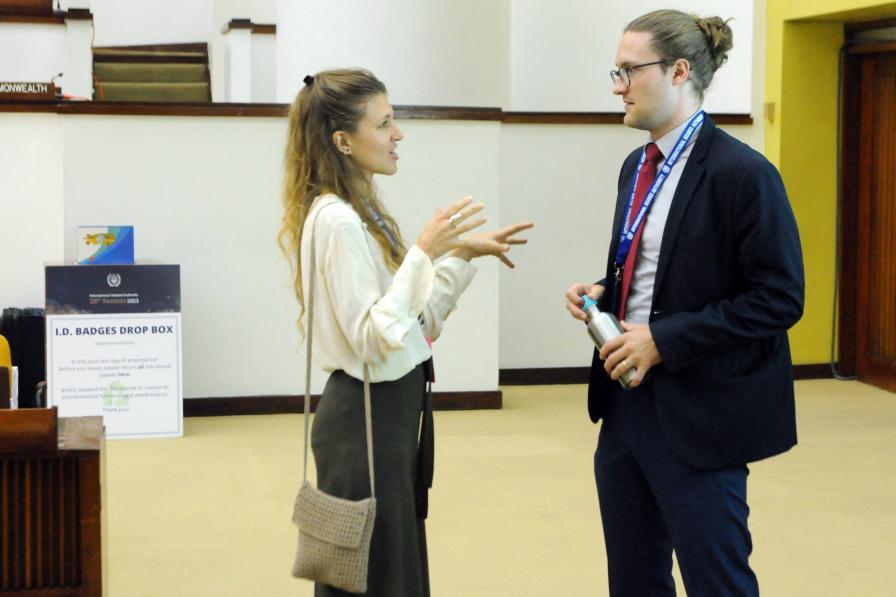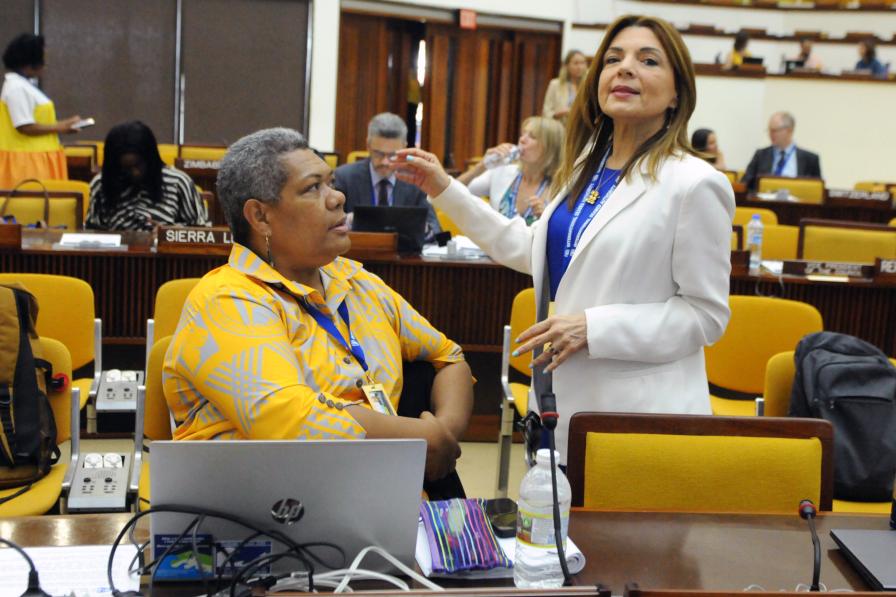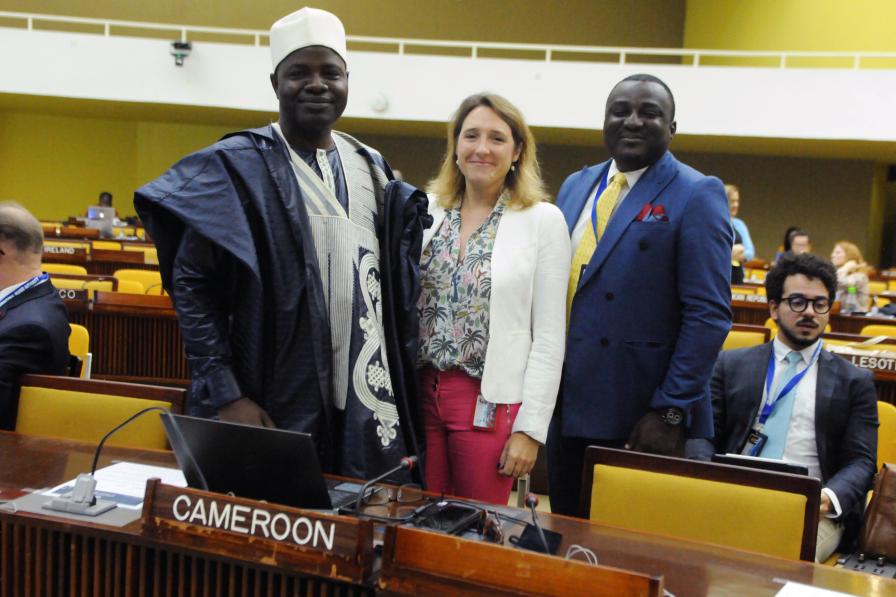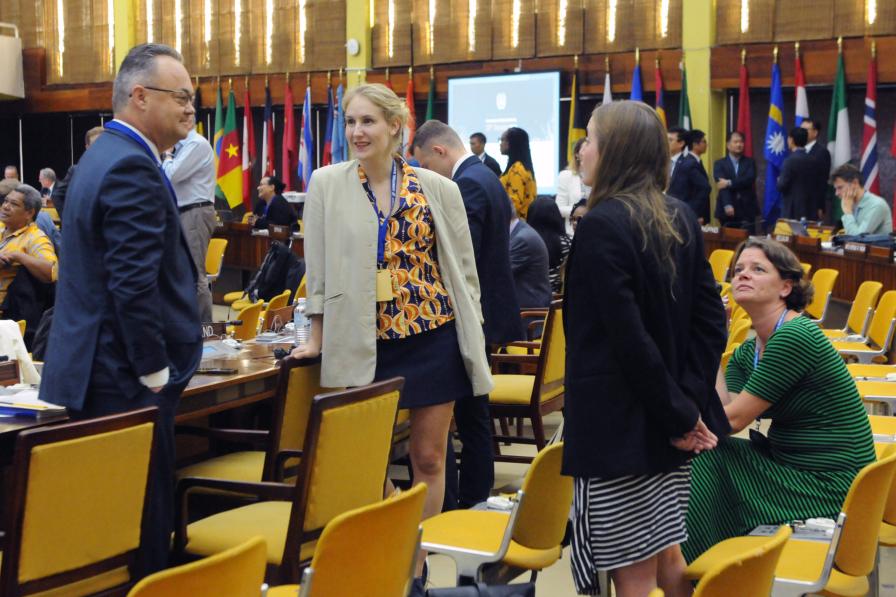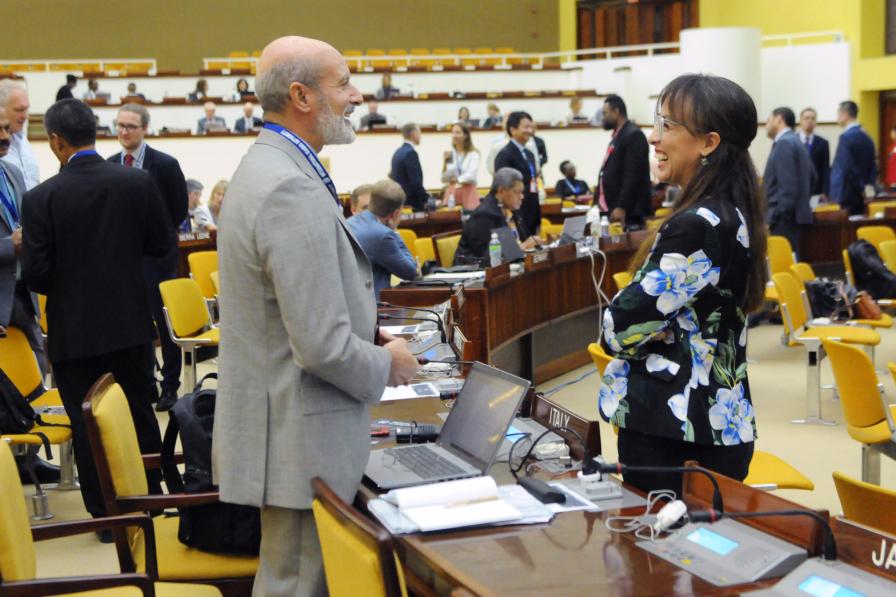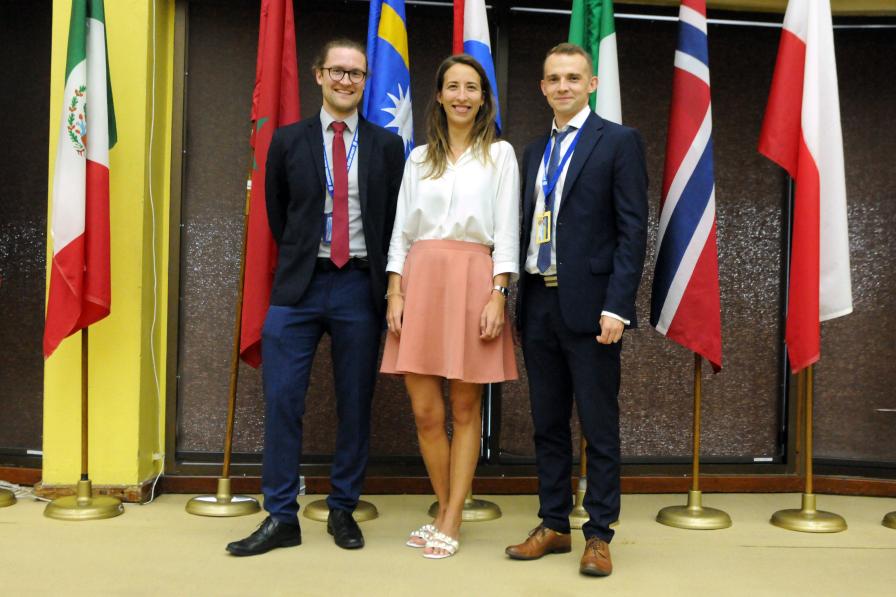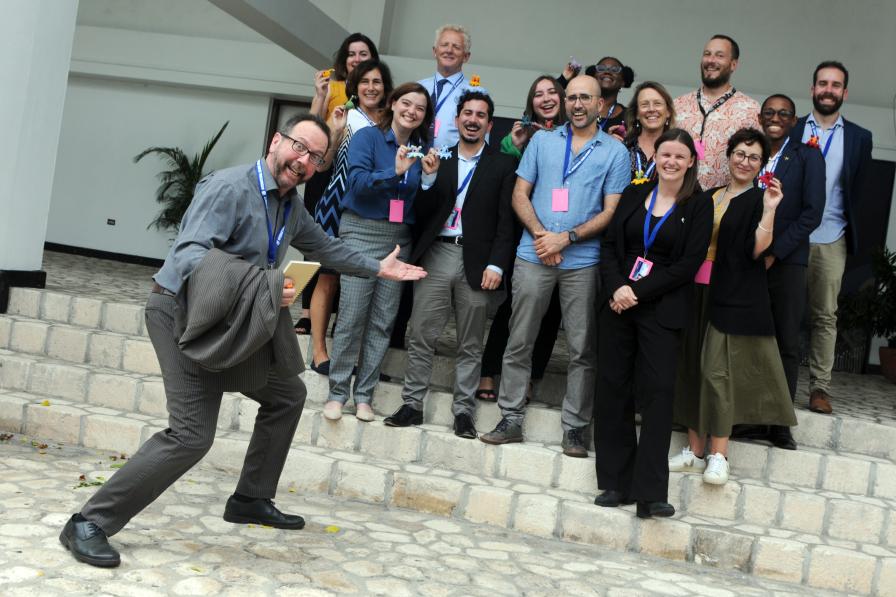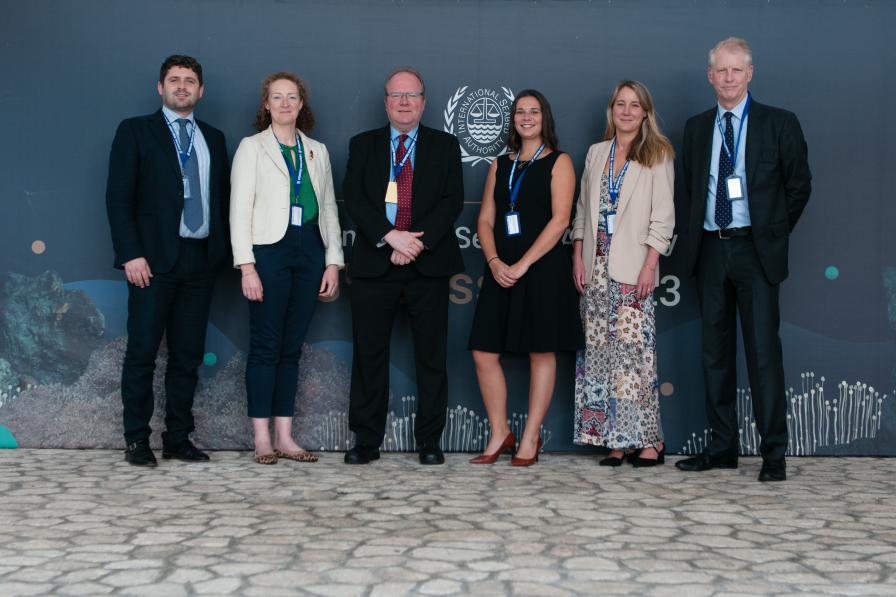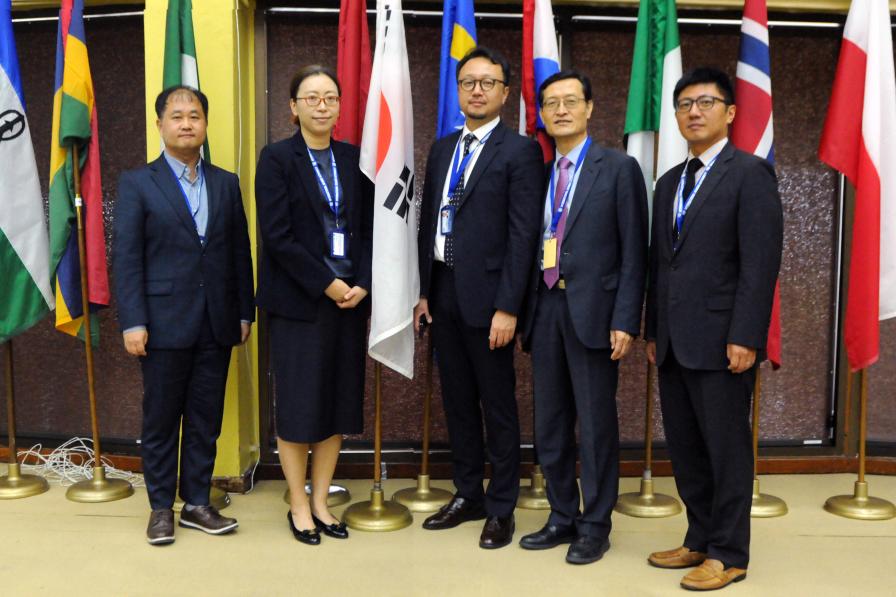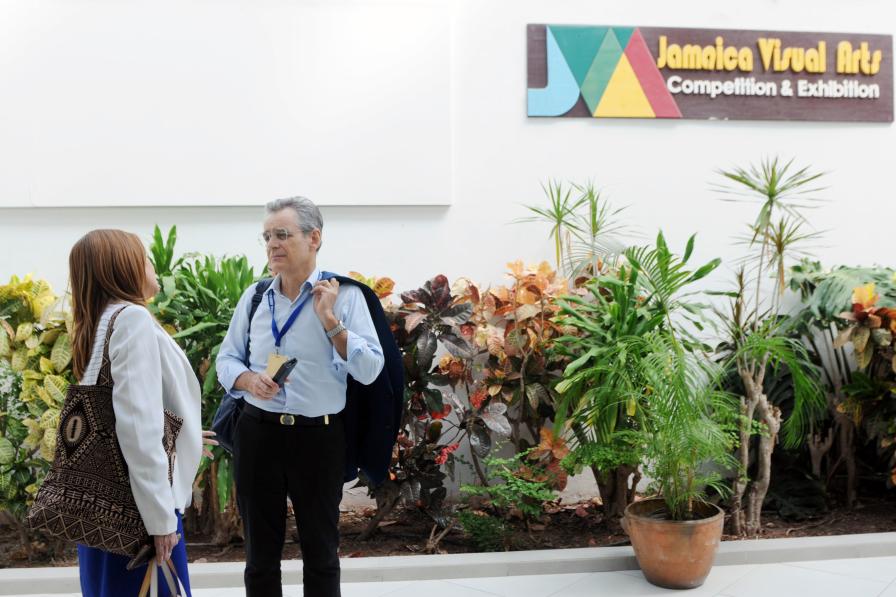Financial issues around commercial deep-sea mining are among the most complex in the negotiations at the International Seabed Authority (ISA). Since the mineral resources in the seabed are, according to the UN Convention on the Law of the Sea, the common heritage of humankind, an appropriate payment regime for commercially exploiting these resources in the form of royalty payments needs to be negotiated.
Olav Myklebust (Norway), Chair of the Open-ended Working Group on the financial terms of a contract, opened the session and drew attention to both the further revised text and intersessional work.
Canada presented intersessional work on transfer of rights, noting broad agreement on the necessity of a transfer profit share mechanism applying to both exploration and exploitation contracts. A regional group stressed that when contractors profit through selling of licenses, revenue for the ISA needs to be ensured.
Australia presented intersessional work on the equalization measure, noting broad support for such a measure, and underscoring the development of a hybrid model combining elements of equalization models already under consideration.
Richard Roth, Massachusetts Institute of Technology (MIT), presented on the financial payment system for deep-sea mining of polymetallic nodules. He reviewed the four financial payment system options and addressed the concept of “fairness,” noting contractors should be subject to the same overall tax burden, equivalent to land-based mining, using an effective tax rate.
Based on the assumption that not all contractors will pay the same sponsor state corporate income tax, he outlined advantages and disadvantages in terms of simplicity and quality of outcome of the four approaches for equalization measures as discussed by the informal group:
- additional fixed rate royalty;
- additional profit share;
- top-up profit share; and
- a newly developed hybrid model where external auditors certify contractors are meeting a 25% corporate income tax rate using the Global Anti-Base Erosion Model Rules (GloBE Rules) of the Organisation for Economic Co-operation and Development (OECD), either directly or through additional payments, and if not, contractors must pay the full additional royalty system payment.
In the ensuing discussion, several delegates noted the need for further analysis of the proposed options for the equalization measure. Many expressed their preference for the hybrid option, with some showing flexibility on the top-up profit share option. Some noted the modeling exercise is theoretical and lacks concrete, operational measures for deep-sea mining. Members also addressed, among other things:
- the relevance of including the analysis of environmental costs and externalities before deciding on any fair and predictable financial model;
- incentives and subsidies;
- distribution mechanisms for ISA revenue arising from royalties;
- operationalization of the principle of the common heritage of humankind, with some delegations highlighting the benefits must accrue to humanity as a whole and not just for contractors and the ISA; and
- application of equalization measures to the Enterprise and joint ventures.
A delegation proposed developing a practical approach regarding the incorporation of environmental costs in the financial system under analysis to be presented at the next Council meeting.
Professor Roth addressed delegates’ concerns, noting, among other things, that issues like environmental externalities or distribution of revenues fall outside the current financial model’s remit, expressing willingness to contribute to such discussions. He highlighted that the financial models are based on data from the Clarion Clipperton Zone (CCZ), noting that calculations may be different for other regions, and stressing the equalization measure is not designed to address unequal circumstances, such as different ore composition, cost structure, or nodule abundance.
In the afternoon, Chair Myklebust invited delegates to initiate work on the further revised draft text. Jo Feldman and Lisa Koch, Norton Rose Fulbright Australia, outlined the document’s structure.
On the determination of a royalty liability (Appendix IV), delegates discussed the future role of the Economic Planning Commission when it is operationalized; whether the regulations apply only to polymetallic nodules; and the need for a definition of commercial production.
Under the relevant standard, members discussed the period when commercial production commences, with a delegate, opposed by others, suggesting increasing the suggested five-year period to 10 years. Delegates decided to retain the five-year period and delete a reference to a “third period of commercial production,” noting it is not applicable. On the determination of the applicable royalty rate, delegates agreed the numerical values of rates included in the document are placeholders at this stage of the negotiations, further suggesting addressing inflationary increases.
On the determination of the applicable equalization measure (regulation 64 bis), several delegations supported streamlining the regulation and moving the details to a standard. Some members called for further analysis and a delegation proposed to develop a definition and clarify when equalization payments are envisaged. Other members queried if the provision would apply in the same way when the contractors are not private entities but states or the Enterprise.
On equality of treatment (regulation 62), many delegates opposed a reference to countering “any disparity arising out of any grossly incomparable concentration of given resources,” noting the aim of the regulation is to ensure equality of financial treatment.
On incentives (regulation 63), delegates discussed three options, eventually agreeing to continue working based on the Chair’s proposal. Delegates focused on: the need to provide for a clear role for the Economic Planning Commission; incentives to promote joint ventures with the Enterprise versus incentives for other purposes; whether incentives should be included for contractors simply for fulfilling their contractual obligations; and financial incentives vis-à-vis subsidies and consistency with the Convention.
On the contract area (regulation 68), delegates discussed whether a contractor shall lodge a royalty return for each mining area or for each contract area, with some delegates noting a contract area may include many mining areas regulated by individual plans of work.
To receive free coverage of global environmental events delivered to your inbox, subscribe to the ENB Update newsletter.
All ENB photos are free to use with attribution. For the 3rd Part of the 28th Annual Session of the ISA, please use: Photo by IISD/ENB | Diego Noguera

